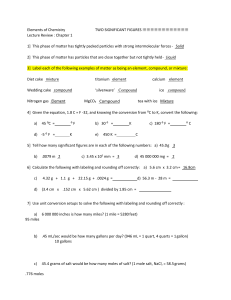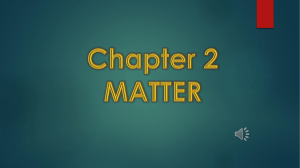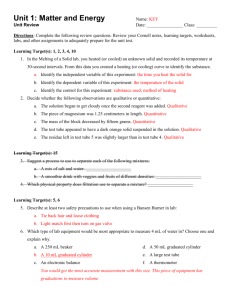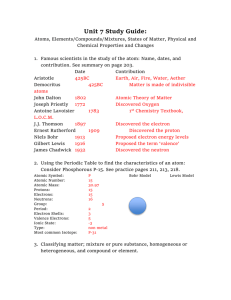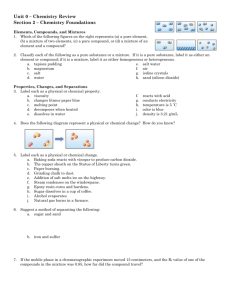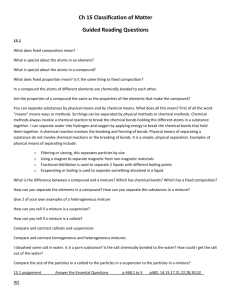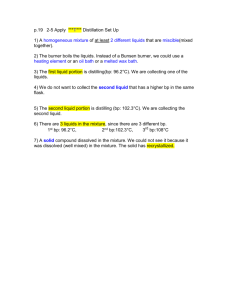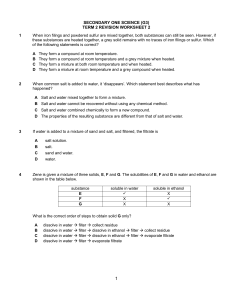Matter Test Review: Chemistry, Sig Figs, Density
advertisement
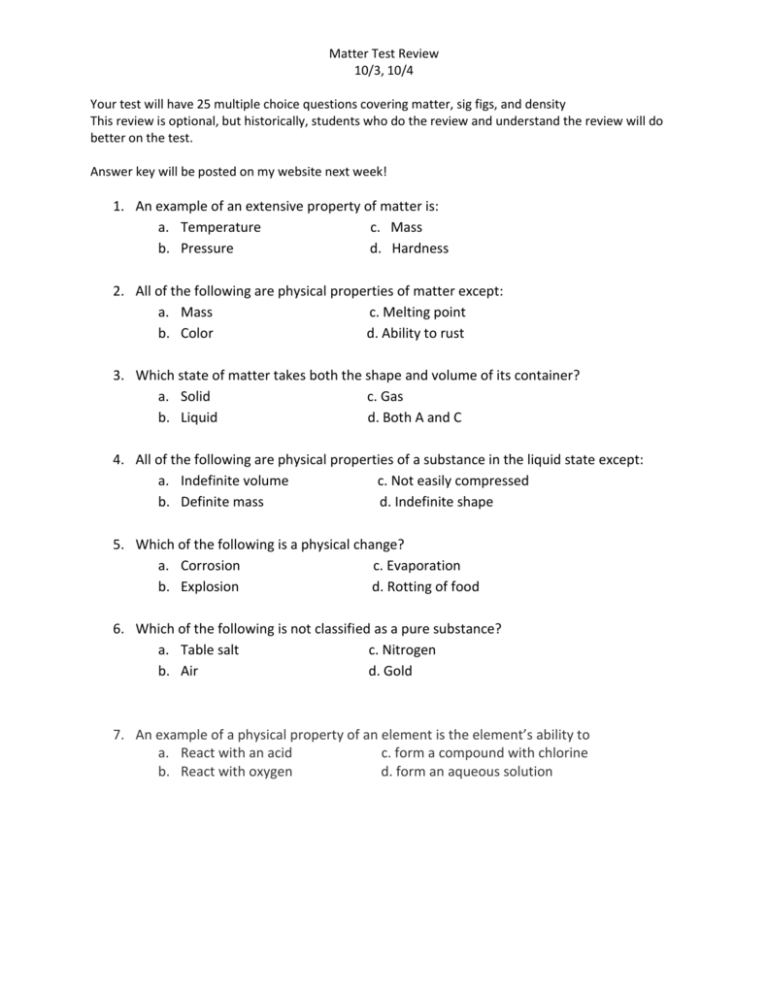
Matter Test Review 10/3, 10/4 Your test will have 25 multiple choice questions covering matter, sig figs, and density This review is optional, but historically, students who do the review and understand the review will do better on the test. Answer key will be posted on my website next week! 1. An example of an extensive property of matter is: a. Temperature c. Mass b. Pressure d. Hardness 2. All of the following are physical properties of matter except: a. Mass c. Melting point b. Color d. Ability to rust 3. Which state of matter takes both the shape and volume of its container? a. Solid c. Gas b. Liquid d. Both A and C 4. All of the following are physical properties of a substance in the liquid state except: a. Indefinite volume c. Not easily compressed b. Definite mass d. Indefinite shape 5. Which of the following is a physical change? a. Corrosion c. Evaporation b. Explosion d. Rotting of food 6. Which of the following is not classified as a pure substance? a. Table salt c. Nitrogen b. Air d. Gold 7. An example of a physical property of an element is the element’s ability to a. React with an acid c. form a compound with chlorine b. React with oxygen d. form an aqueous solution 8. Which diagram to the right (X, Y, or Z) represents a compound? Which diagram represents elements? Which diagram represents a mixture of elements? (HINT: A compound is made up of two or more DIFFERENT elements) 9. Classify the following as an element, compound, homogeneous mixture, or heterogeneous mixture: a. Combining copper and tin makes bronze b. Salt water c. Table salt d. Air e. Nitrogen f. Gold 10. Describe the separation techniques used to separate the sand from the salt in the Surfs Up Lab 11. How does distillation separate a mixture of two or more liquids? 12. List 2 examples of a chemical property 13. List 2 examples of a physical property 14. What type of change is represented to the right and how do you know? 15. A large sample of solid calcium sulfate is crushed into smaller pieces for testing. Which two physical properties are the same for both the large sample and one of the smaller pieces? a. Mass and density b. Mass and volume c. Solubility and density d. Solubility and volume 16. How do solids, liquids, and gases differ in molecule spacing? 17. How are solids, liquids, and gases different in terms of shape and volume? 18. What are 4 signs of a chemical change taking place? 19. What is the volume of 80.0 g of ether if the density of ether is 0.70 g/mL? 20. A scientist obtains the number 1250.37986 on a calculator. If the number actually has 4 significant figures, how should it be written? a. 1251 d. 1.250 x 103 b. 1250.3799 e. 1.250 x 10-3 c. 1250.4 21. Determine the number of significant figures in the following measurements: a. 1150 kg _____________ b. 0.000000000055 g ____________ c. 100.5 K ______________ d. 4.5000 x 103 m ______________ 22. A tennis ball has a volume of 75cm3 and a density of 1.05g/cm3. What is the mass of the ball? 23. A box has a length of 50cm, a width of 15cm and a height of 2.1cm. If the mass of the box is 400g, what is the density?

